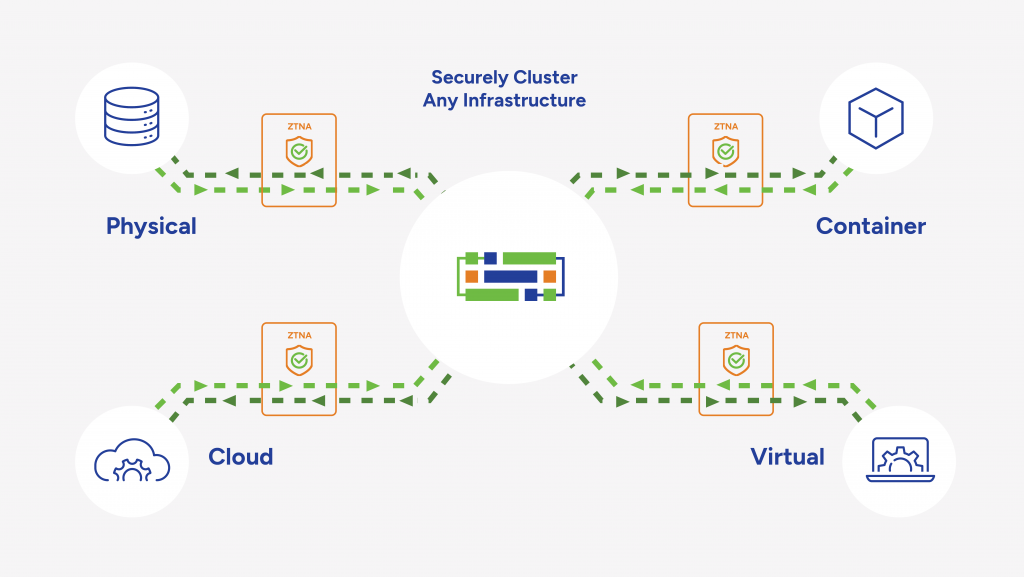Unlock the Path to SQL Server Container Modernization with Rancher and DH2i
SUSE guest blog authored by:
Don Boxley, Co-Founder and CEO, DH2i

SQL Server holds an organization’s most business-critical data assets. Therefore, maximum uptime and security are among the top priorities for the IT teams that manage them. However, industry pressures have these IT pros adding another imperative task to their to-do list: SQL Server modernization.
A full-on SQL Server modernization initiative is a terrifying prospect for most organizations, and understandably so. These critical relational database management systems can be absolute behemoths with a massive price tag associated with downtime. Thankfully, a new hero has emerged within the IT landscape to help make modernization more easily attainable than ever before.
Containers
Containers are lightweight, isolated software packages that encapsulate an application and its dependencies, allowing developers to package, deploy, and run applications consistently across different environments. They have evolved to be the perfect answer to SQL Server modernization challenges. This is a direct result of the innovation in the surrounding technology ecosystem. With the ability to now ensure near-zero downtime and Zero Trust security, containerization has become a viable deployment method for even the most critical SQL Server production workloads.
DH2i’s DxEnterprise (DxE) Smart High Availability Clustering software and Rancher by SUSE have led the charge in unlocking the SQL Server modernization benefits of containers. These two technologies enable users to migrate physical and virtual SQL Server databases to availability groups in Kubernetes in literal minutes.

What Makes the DH2i and SUSE Solution so Uniquely Powerful?
DxEnterprise and Rancher by SUSE unlock simplistic and efficient SQL Server modernization. DxE accomplishes this with unparalleled cluster flexibility and capability that brings the following proprietary advantages to the table:
- Clustering for native instances and containers in the same Availability Group (AG)
- Mixed Windows and Linux clusters and AGs
- Sidecar container deployment for clusterware and application isolation
To make deployment and migration even easier, SUSE’s Rancher offers a streamlined web interface to deploy highly available SQL Server AGs in Kubernetes using a Helm chart. This makes a complex deployment achievable in only a few clicks with a single line of code. Once deployed, DxE can easily pull instances and containers into the same cluster and Availability Group, and easily facilitate migration using database mirroring.
Use-Case: Migrating a Database from a Windows Virtual Machine to Kubernetes
The value containers hold for modernizing SQL Server is understood universally across industries. DH2i has customers all over the world in financial services, manufacturing, legal, all levels of government, and many more. One characteristic that unifies many of them is that they started their journey to containers from a largely virtualized state.
Our engineering team set up a demonstration to show exactly how DxEnterprise and Rancher can be used to facilitate a virtual machine to container migration. In this example, we start with a standalone Windows instance running in a virtual machine on our engineer’s local workstation in Portland, OR—a totally separate network from the rest of the demo system. Ultimately, a SQL Server database is migrated from our standalone Windows VM to a new Kubernetes container environment. You can watch the brief demonstration right here: SQL Server Database on Windows VM to Kubernetes
Summary
The above demonstration shows a single use-case of migrating a SQL Server database in a Windows VM to Kubernetes. However, the same 3 steps shown in this demonstration can be used to easily facilitate the migration of any physical, virtual, or cloud deployment into a Kubernetes cluster using DxEnterprise and Rancher:
- Deploy your new Availability Group in Kubernetes using Rancher Helm chart.
- Add your starting node to your newly created Availability Group.
- Use SQL Server database mirroring to migrate database(s) from existing infrastructure to new containerized deployment.
Modernizing SQL Server with containers can help future-proof your organization and maintain competitive advantage by unlocking ongoing benefits such as:
- Faster deployment and scaling of new applications.Maximum portability across any mix of infrastructure.
- Peak resource utilization and performance.
- Cost savings on infrastructure and management expense.
DH2i’s DxEnterprise and Rancher by SUSE truly unlock the most streamlined SQL Server modernization process ever. Leveraging on the ease of use of Rancher’s streamlined interface for deploying Helm charts, and DxEnterprise’s clustering flexibility, any SQL Server database—Windows or Linux—can be migrated to Kubernetes in mere minutes.
To learn more about how DH2i and Rancher by SUSE can help you modernize your SQL Server environment, get signed up for a free personalized demo and consultation.
Check the DH2i certification entry in SUSE Partner Certification & Solutions Catalog.
If you are interested in having your solution available to be deployed in the SUSE Rancher marketplace by packaging it in a Helm chart, see the SUSE process here.
Related Articles
May 08th, 2023